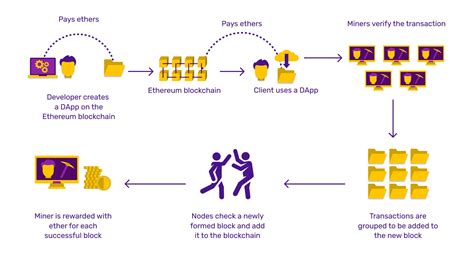Uncertainty over future supply in Ethereum
As the second-largest cryptocurrency by market cap, Ethereum has long been seen as a bastion of technological innovation and decentralized governance. However, behind its impressive technical features lies a pressing concern: can we trust that the range won’t increase by a few lines of code in 2140?
In this article, we delve into the intricacies of Ethereum smart contract development and explore the potential risks associated with future supply increases.
The problem with smart contract complexity
Ethereum smart contracts are designed to automate complex transactions and economic processes. However, as these contracts become more common, so too does their complexity. Due to the number of possible scenarios and extreme cases, some experts worry that the code itself may not be robust enough to handle even a small increase in supply.
“Smart contracts are like LEGO bricks,” says Dr. Rachel Kim, a leading blockchain technology expert. “While they are incredibly versatile and powerful, they can also be fragile and can break if not carefully designed.”
Supply Risk Increases

So what exactly could cause Ethereum’s sudden increase in supply? The short answer: a few lines of code.
Here are some potential risks:
- Hard Forks: As the network grows, it may be necessary to introduce new block headers or modify the protocol, leading to a hard fork that splits the network into two distinct versions.
- Smart Contract Overload: As the number of transactions and economic activity increases, the computational load on the Ethereum blockchain increases. If not designed properly, this can lead to performance issues and even crashes.
- Security Vulnerabilities
: As with any complex system, there is always the risk of security breaches caused by poorly designed smart contracts or insufficient testing.
Can we trust the code?
While it may seem intuitive to write code to prevent future supply increases, the reality is much more nuanced. Ethereum’s smart contract design is inherently decentralized and open source, meaning that any changes to the protocol must be reviewed and approved by the entire community.
“The fact that we use a transparent and democratic process to update the protocol has always been one of its strengths,” says Dr. Kim. “However, it also means that there are no guarantees, even when the code is written with the best of intentions.”
Risk Mitigation
There are several things developers can do to mitigate these risks:
- Perform thorough testing. Ensure that any changes to smart contracts or the protocol itself are thoroughly tested for performance and security.
- Use secure coding practices: Use secure coding guidelines and use tools like Solidity’s built-in analytics to identify potential vulnerabilities.
- Network monitoring and maintenance: Regularly update and monitor the Ethereum network, including its scalability and performance.
In summary, while we have no guarantee that the supply will not increase by a few lines of code in 2140, it is clear that the complexity of smart contracts and decentralized governance comes with significant risks. By understanding the risks and taking steps to mitigate them, developers can help ensure the long-term health and stability of the Ethereum ecosystem.
Be vigilant and keep an eye on the future (or at least the code)

